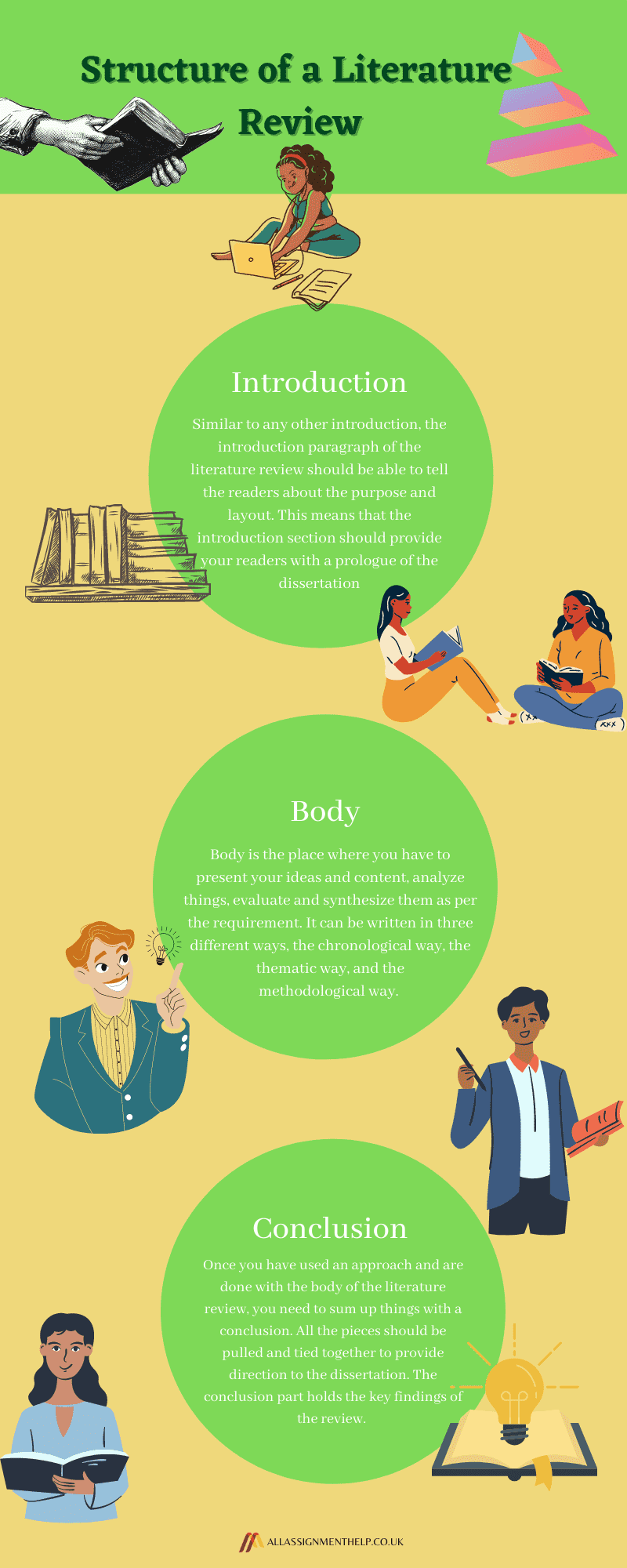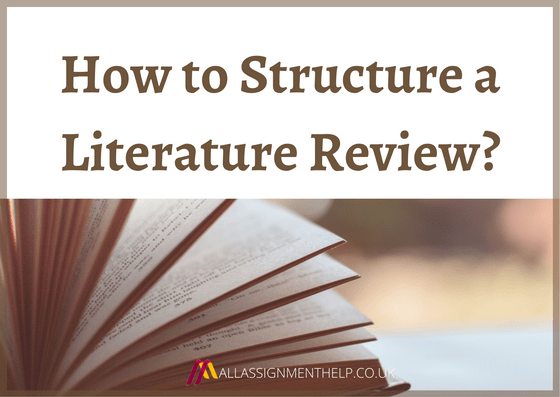A literature review is nothing but a survey conducted on certain topics for scholarly purposes. Through the review of literature of any research process, you can understand the overview of the topic in present, relevant theories, loopholes in the research, and how it can be made better. A good literature review is inclusive of a summary, analysis, synthesis, and evaluation of the subject or topic. Putting the dissertation together and writing a good literature review can be intimidating. However, the experts of allassignmenthelp.co.uk can be a great help for you in such a situation.
Moreover, if you want to decide the right structure of the literature review, considering its purpose is crucial along with an argument over the weaknesses and strengths of the existing research. It is very important to have an argument in the literary review otherwise it would be simply a summary of your topic. Once you consider the key message of your literature review, you can know the relevant and irrelevant content and edit them accordingly.
Now let us know what experts have to say about the structure of the literature review. With the help of this blog, you can easily understand what a good literature review should contain. Moreover, if you still find it daunting to write a good literature review then literature review writing help is always in the service. You can contact them anytime as per your need.
Why a Dissertation Needs a Literature Review?
Every time you write a thesis, research paper, or dissertation, a literature review is needed to establish research with whatever knowledge already exists. One can demonstrate the relativity with the topic with the help of a literature review. Moreover, it gives you chance to develop a methodology and theoretical framework for the research. It helps students to position their self with other researchers and shows how the research talk about an issue and contribute to it.
There are chances that you get to write a literary review alone as an assignment. In this case, if you need any expert guidance you can contact assignment essay help, Leeds. The experts can provide you with the right steps to write the literature review or can solve it for you.

How to Structure a Literature Review?
Like any other chapter of the dissertation, the literature review has to be logical and clear. There are three crucial components of a literature review. These are an introduction, a body, and a conclusion. One cannot overlook any of these components otherwise it would make the research incomplete. Let us read about these components in detail.
An introduction
Similar to any other introduction, the introduction paragraph of the literature review should be able to tell the readers about the purpose and layout. This means that the introduction section should provide your readers with a prologue of the dissertation. It should be like the blueprint of your dissertation so that readers could figure out what they are going to dive into. If you still find it difficult to organize things well then look for the experts who can make my assignment.
Moreover, the introduction needs to outline the topic inclusive of any jargon (if your dissertation holds that). It should also be able to tell the readers what all would be discussed in the dissertation and what all you are going to exclude. This would help you develop a clear focus. The more you make the focus clear, the more you can talk about the issue. In addition to this, you can also include examples here depending upon the nature of the dissertation. This means connecting a present trend with the issue. It would make it clear for your examiner that you know how your research is associated with the existing trend of knowledge.
In case you have other assignments piled up along with your thesis writing, you can hire an assignment expert so that you can focus more on your dissertation.
The body
You must know already that everything lies here, in the body section. This is the place where you have to present your ideas and content, analyze things, evaluate and synthesize them as per the requirement. We can also say that you can earn the most marks from this section only if you write it effectively or can lose them if it is written incorrectly. Therefore, a clear discussion is important. Given below is a fresher’s guide on how to organize a literary review.
Also Read: A freshers guide to surviving college life.
It can be written in three different ways, the chronological way, the thematic way, and the methodological way.
The chronological way
If we talk about the simplest way of structuring a literature review, then it has to be chronological. This means according to the date. What was published first, would be written or mentioned first in the literature review leading to the recently published. One of the very significant benefits of structuring the literary review chronologically is that we can discuss development in a particular field. It also helps you to highlight the most impactful research. So, if you are trying to show how a certain thing has unfolded over time, this is the best way to mention it. You can explore change with this approach.
The thematic way
In this approach, one structure literary review as per the category or theme. When you’ll collect and synthesize the literature, you will notice patterns and themes, it can be used further in structuring the body of the review of the literature. It is the most commonly used approach. One of the best ways for students to use the thematic way is by asking a certain question to themselves. For example: Is there any pattern in the literature, are the shreds of evidence enough for the theme, and what categories and central themes other researchers have used?
The methodological way
This is what we all know when we talk about reviews of the literature. We all know how to use the methodological way. It can be the qualitative method, quantitative method, or mixed-method. If your research is drawn from multiple disciplines then the methodological way is the best to use.
The Conclusion
Once you have used an approach and are done with the body of the review of the literature, you need to sum up things with a conclusion. All the pieces should be pulled and tied together to provide direction to the dissertation. The conclusion part holds the key findings of the review. It is as significant in the review of the literature as the introduction. It gives the reader an idea of what you have discussed and you also give your final opinion on the topic and make some recommendations. You should keep the following points in mind while writing this section of the review of the literature and write the points on which you agree and vice versa. You should find out whether there is a possibility of further research on the same subject. Writing your overall views on the topic is a must as well.
Conclusion
In this blog, we have discussed how a great impact can be made on the readers with a well-structured review of the literature. It should have a clear introduction, body, and conclusion. Moreover, the review should be written in a way that sets a direction for the entire research.
Frequently Asked Questions
| Q. How to write a literature review? A. Writing good literature requires good research for literature and the right organisation of paper and evidence. |
| Q. How do we end a literature review? A. While ending the literature review, one must note all important points and suggest some practical implications in the conclusion. |
